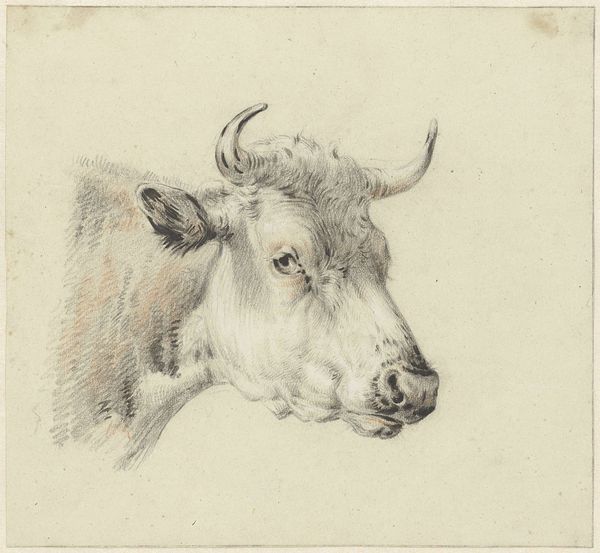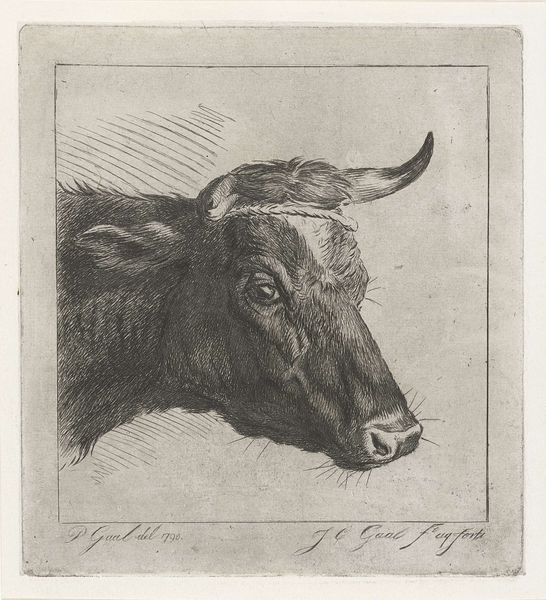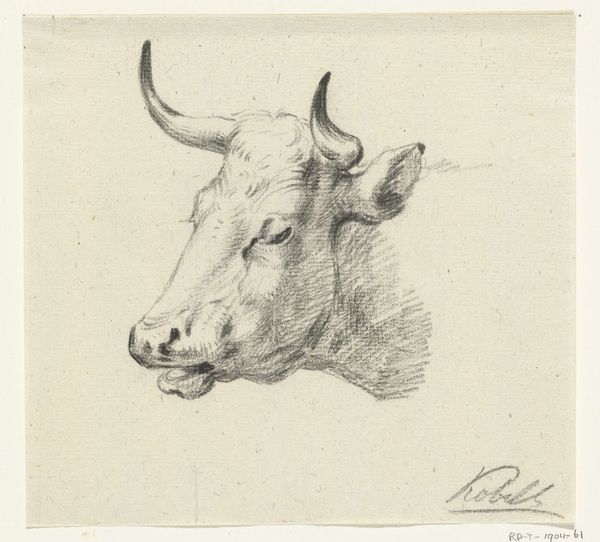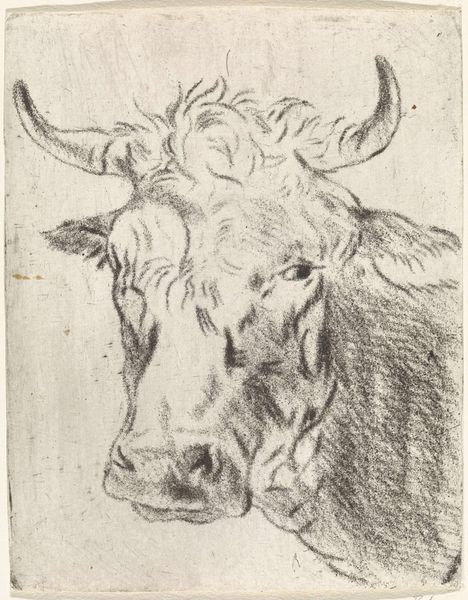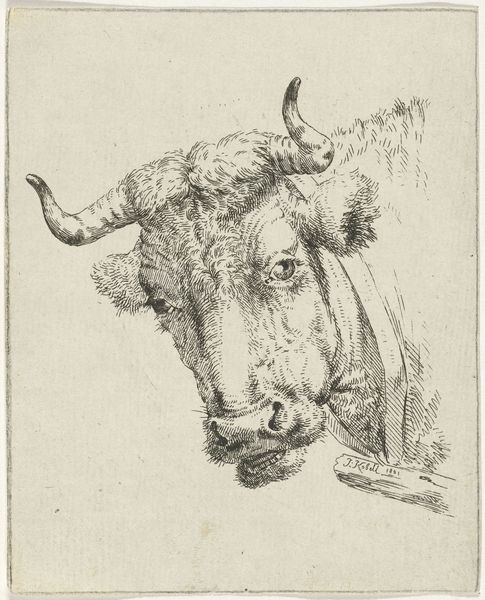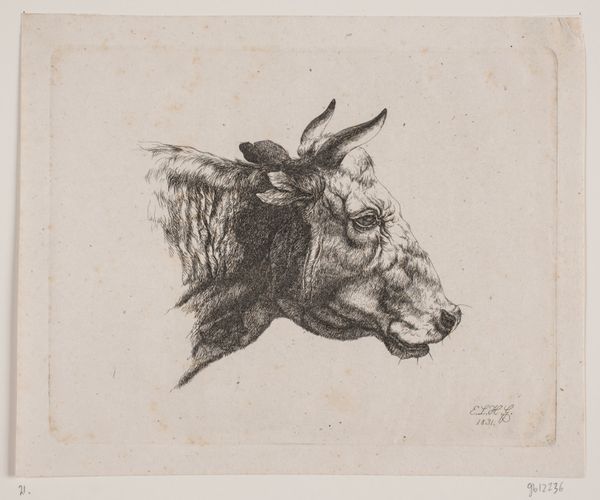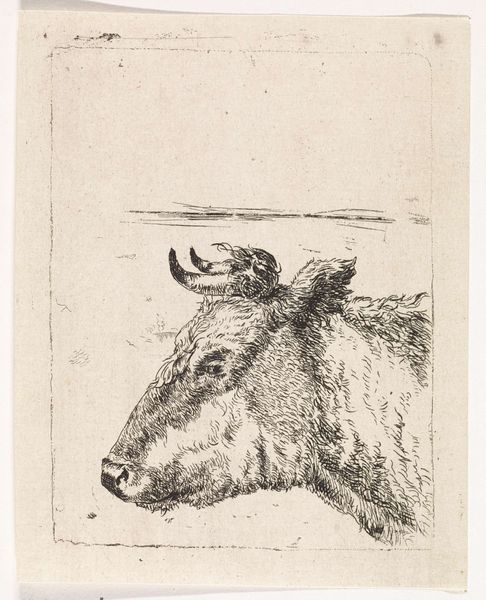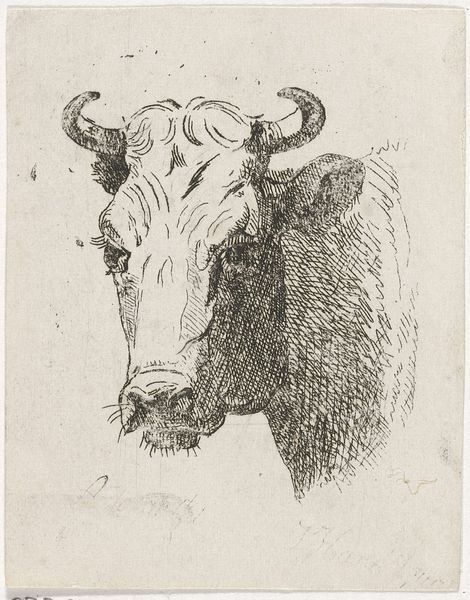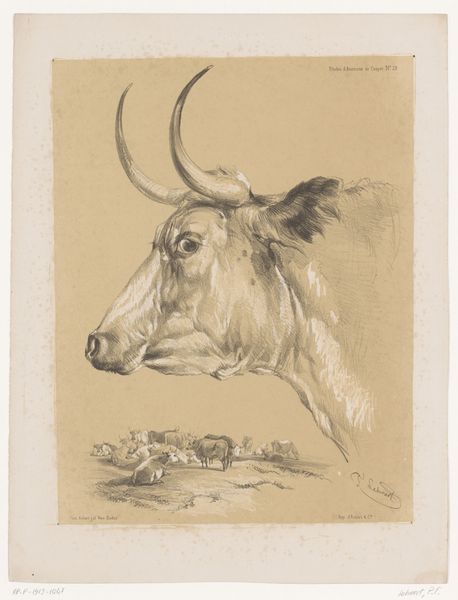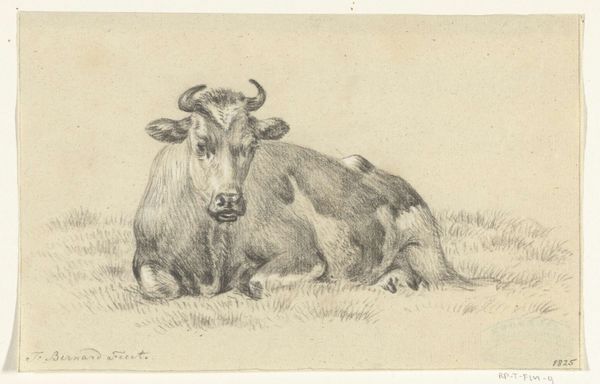
drawing, print, etching, ink
#
portrait
#
drawing
# print
#
etching
#
figuration
#
form
#
ink
#
line
#
realism
Dimensions: height 95 mm, width 95 mm
Copyright: Rijks Museum: Open Domain
Curator: "Koeienkop B," or "Cow's Head B," etched by Wouter Johannes van Troostwijk in 1810, is an incredibly detailed study currently housed here at the Rijksmuseum. It’s primarily executed in ink and offers a stunning example of early 19th-century animal portraiture. What strikes you immediately? Editor: The intensity of the gaze. It's a rather somber image, really. The level of detail emphasizes the weight of existence, or maybe just the heaviness of being a farm animal. The fine lines of the etching bring out every wrinkle and hair; it's hyper-realistic but drained of idealization. Curator: Indeed. It speaks to the socio-economic climate of the period, where agricultural realism began to find a place in art. Troostwijk, though respected within artistic circles, catered to a burgeoning interest among landowners and farmers who wished to immortalize their prize livestock. It represents an emerging mercantile perspective within the art world. Editor: Absolutely, this isn’t just art; it's a commodity portrait, embedded within the larger systems of animal husbandry and early capitalism. You almost feel implicated in the consumption of this cow; the piece isn't just a representation, but a testament to ownership and labor. Is there any record of how such pieces were received? Curator: Exhibition records show a moderate, if specialized, public interest. Pieces such as these held appeal for those invested in innovative animal breeding and agricultural advancements. The level of detail would have served an informative purpose for those in related industries, going beyond the aesthetic value alone. Editor: That functional element complicates its presence as a solely aesthetic object, right? It reminds us how art participates within multiple layers of power, whether of land ownership, economic structure or visual narrative. Thank you. Curator: My pleasure. Hopefully, we’ve illuminated how historical, cultural, and aesthetic interpretations coalesce in viewing "Koeienkop B.”
Comments
No comments
Be the first to comment and join the conversation on the ultimate creative platform.

